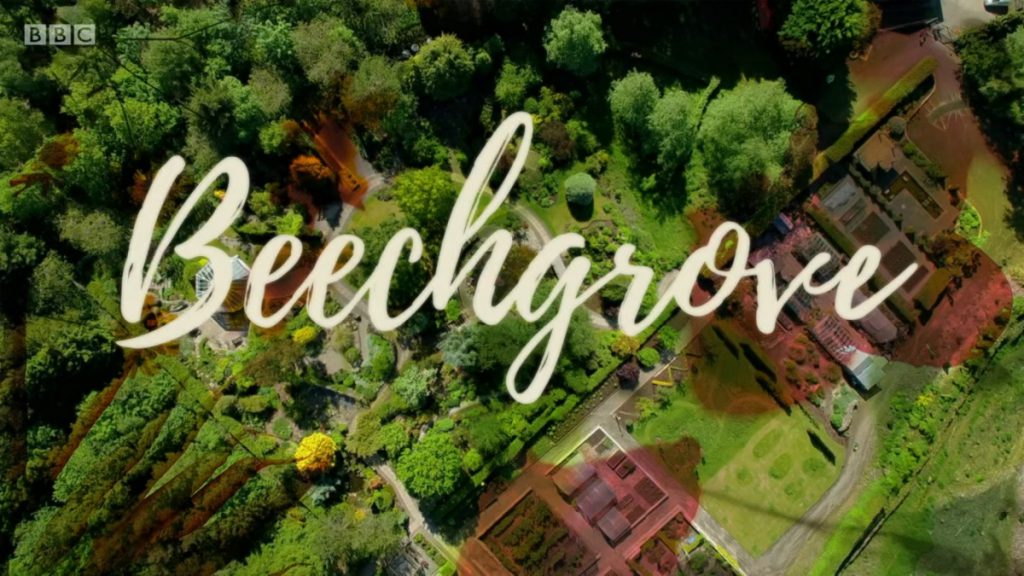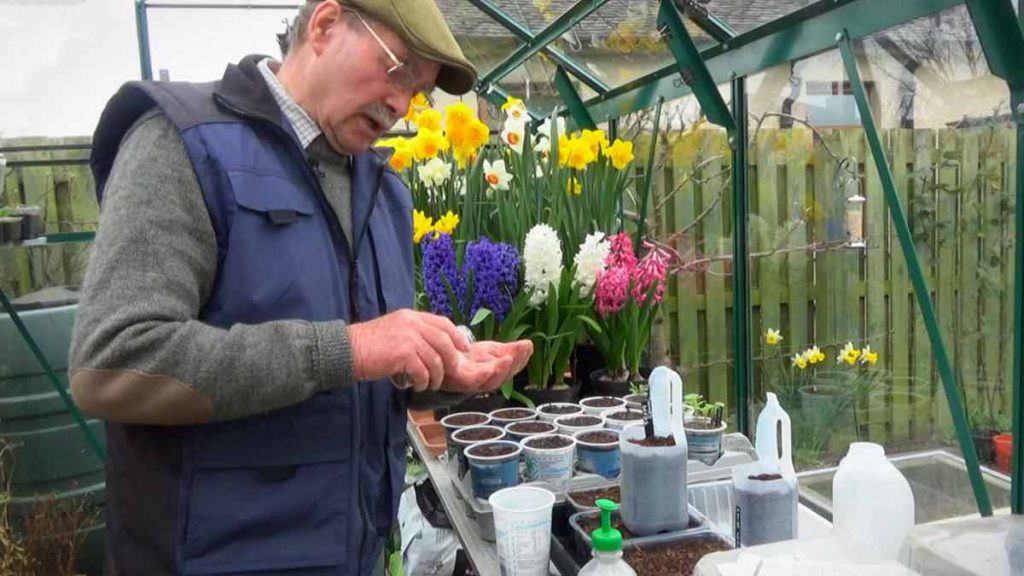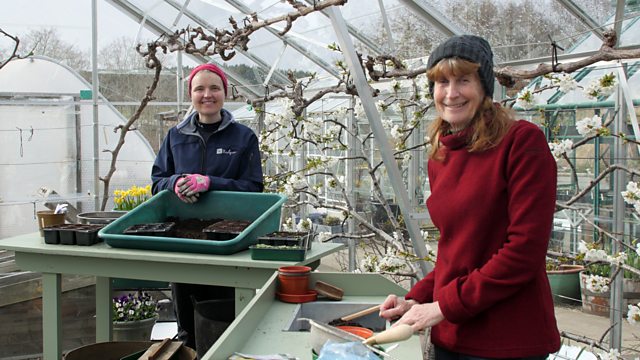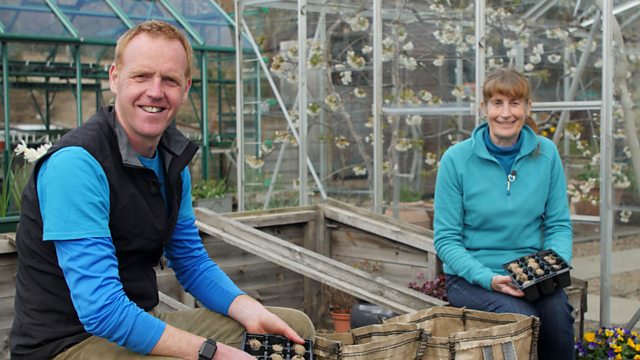The Beechgrove Garden 2021 episode 14: Carole and Mairi take a look at the progress of the beds of wildflower seeds and turf that they sowed and laid eight weeks ago. Kirsty is also at Beechgrove, where she, Carole and Mairi enjoy a masterclass on the Japanese art of Kokedama (creating Japanese moss balls) with expert Fiona McDonald from Aberdeen.
Meanwhile, Brian is at the grounds of Scone Palace dealing with as many of the worst weeds he has. He explains how weeds work and grow, and shows how to deal with the dreaded Himalayan balsam, knotweed and horsetail.
The Beechgrove Garden 2021 episode 14
Bonsai
Bonsai is the art of growing dwarf trees and shrubs from seedlings or rooted cuttings. It requires careful training, pruning and container restriction – the latter giving bonsai its name as it translates as ‘tray cultivation’. This is a fun and beautiful way of cultivating plants on a miniature scale.
The methods explained below are for outdoor-grown bonsai. However, there is a section at the bottom of this page on indoor bonsai.
Most trees and shrubs can be grown as outdoor bonsai. The act of restricting growth causes the leaves to become reduced in size. Naturally small-leaved plants such as azaleas lend themselves most readily to bonsai, but bear in mind that their leaves will become smaller still. Scot’s pine (Pinus sylvestris), larch (Larix sp.), Cercis sp, maidenhair tree (Ginkgo sp.), Lonicera nitida, yew (Taxus baccata) and Japanese maple (Acer sp.) are all good for starting your collection off.
The pruning of bonsai is very specific to individual species of tree. In the beginning, a young bonsai would require pruning about once a year in order to form your ultimate shape. Once established, plants require pruning and trimming several times a year to keep them balanced and in shape.
Wildflower meadow
Wildflower meadows are an alternative to lawns and borders, and can provide a display for many months. Choose from annual meadows that provide a one-off show or perennial meadows that persist from year to year.
Wildflower seed merchants supply mixtures of wildflowers and grasses suitable for various soil types and situations. Choose one that suits your local conditions. Where possible, obtain seed of British origin. It is advisable not to take plants from the countryside and repeated seed collection would be likely to have a destructive effect on many species over time. In some cases, it also can be illegal.
Sow during March and April or in September, depending on soil conditions. On lighter soils, autumn-sown seeds generally germinate and establish quickly, although some will not come up until the following spring. This delay makes it advisable to wait until March or April on heavy soils, as waterlogging may cause the seed and seedlings to rot during winter.
Please note that garden ‘wildflower’ seed mixes and/or plants (which may contain non-natives or be of unknown provenance) should not be sown in the wider countryside or close to environmentally sensitive areas. They should also never be sown without a landowner’s permission.




